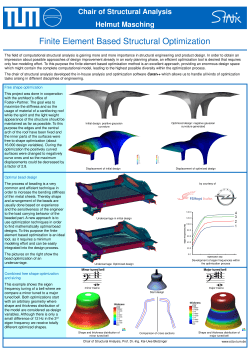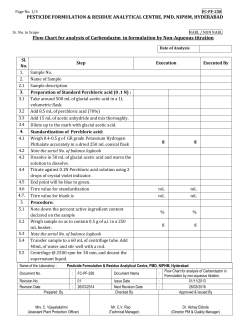
019136: Structural Optimization Spring 2015
019136: Structural Optimization Spring 2015 Exercise 1 (due April 14) Topics: Problem formulation, graphical solution Preliminary reading: C & K book, chapter 1 and chapter 2. Guidelines: In this exercise you will formulate structural design tasks as optimization problems, and use graphical representations in order to study the problems and to solve them. The MATLAB function ezplot can be quite useful for plotting implicit functions, i.e. g(x, y) = 0. Submission: Upload to moodle as a single pdf file named HW1 [ID − N U M ]. 1. Solve problem 1.1 from Kirsch’s book, see Figure 1 for the setup. The design problem is stated as follows: • The goal is to minimize the weight of the truss. • A point force is applied at the bottom node as presented. • The design variables are: x1 = the bar cross-section area, identical for the three bars; and x2 = the inclination angle of bars 1 and 3. • The state variables are: displacements r1 and r2 ; and bar stresses σ1 , σ2 and σ3 . • The allowable vertical displacement is 0.02. • The allowable stresses are 20 in tension and -15 in compression. • The inclination angle should be between 30 and 60 degrees. • The modulus of elasticity is 30,000. • Use equilibrium equations based on the stiffness method. Figure 1: Problem setup 1 Your tasks are to: (a) Classify the design task (sizing / shape / topology). (b) Solve the equilibrium equations and express all general constraints using the design variables only. (c) Based on the above, write the problem in standard form using design variables only, leading to the so-called ‘nested’ formulation. (d) Based on the nested formulation, solve the optimization problem graphically: sketch the objective function contours and the feasible region; locate the minimum point; explain which constraints are active at the optimal solution. (e) Compare your solution vs. Excel solver. 2. Solve exercise 2.5 in the C & K book. 2
© Copyright 2025





















